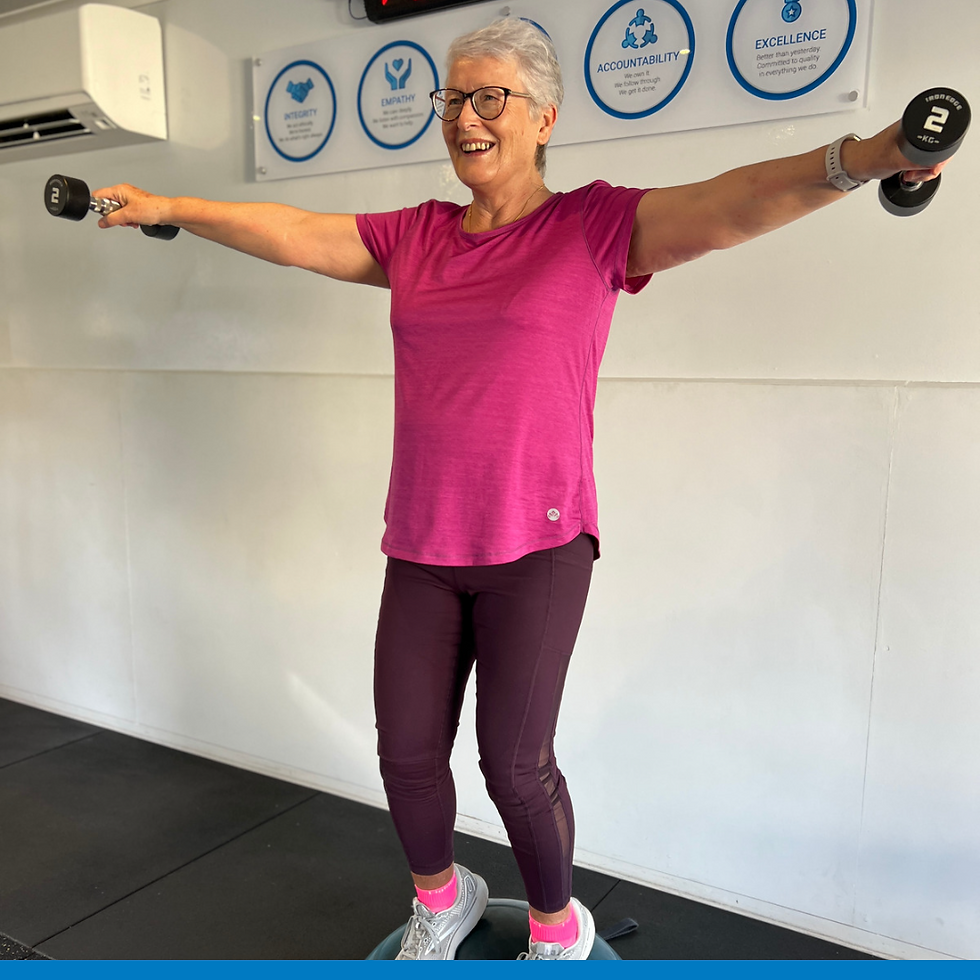Neurological Adaptations to Exercise
- Trent Malcolm
- Dec 11, 2023
- 2 min read

Exercise training can induce various neurological adaptations that affect the structure and function of the nervous system. These adaptations occur in response to the demands placed on the body during physical activity. Here are some key neurological adaptations associated with exercise training:
Increased Motor Unit Recruitment and Firing Rates:
the collective body of evidence indicates that resistance training is capable of increasing the capacity to more efficiently recruit the highest threshold motor units (i.e., increased recruitment and firing rates).
Enhanced Intermuscular Coordination:
After six weeks of training, individuals typically exhibit improved intermuscular coordination. This means that the various muscles involved in a movement work together more efficiently, reducing energy wastage and improving movement efficiency.Improved
Muscle Fibre Activation:
Six weeks of training lead to improved muscle fiber activation. This adaptation involves the central nervous system learning to recruit and activate a larger proportion of available muscle fibers, contributing to increased strength and power.Enhanced Proprioception and

Balance:
Three months of training can significantly enhance proprioception (awareness of one's body position) and balance. The nervous system becomes more adept at processing sensory information from proprioceptors, leading to better precision of movement and balance. This is important for motor control and may reduce the risk of falls and injuries.
Neuroplasticity:
Exercise can promote neuroplasticity, which is the brain's ability to reorganize itself by forming new neural connections. This can enhance learning, memory, and overall cognitive function (attention, speed of processing). This is particularly relevant in aging populations, where exercise can help mitigate cognitive decline.
It's important to note that the specific neurological adaptations can vary depending on the type, intensity, and duration of the exercise. Additionally, individual factors such as age, fitness level, and genetics play a role in how the nervous system responds to exercise.
Our team of Exercise Physiologists are experts in prescribing exercises and movements that stimulate the desired neurological adaptations, and this will vary from person to person. Individualising exercise prescription is the key to our clients achieving their goals.
If you would like an assessment and individually designed program specific to your needs and goals, don’t hesitate to give our office a call to book in a 1:1 session.







Skill development is important in a changing job market. Many professionals use online courses to stay competitive. reed courses uk supports this need through practical learning topics. These courses often focus on applied skills. The College of Contract Management emphasises real-world relevance.
for learners exploring new courses, checking enhanced learning credits reveals important information about course validity and level. credits indicate the scope of study and qualification recognition. this helps you avoid enrolling in programmes that don’t meet your needs. it offers a clearer picture of what you’ll achieve. the college of contract management supports students in navigating these decisions.
The College of Contract Management maintains its reputation by offering structured, accredited programmes that meet global standards. Students gain access to expert-led lectures and resources designed to enhance professional capability. The institution’s online format provides both flexibility and academic depth. Such an approach makes it ideal for those seeking recognised qualifications while continuing to work full-time.
This free online Drift Hunters game lets you customize your cars, has realistic physics, and has a lot of tracks where you can practice your drifting talents.
wqasedfgh